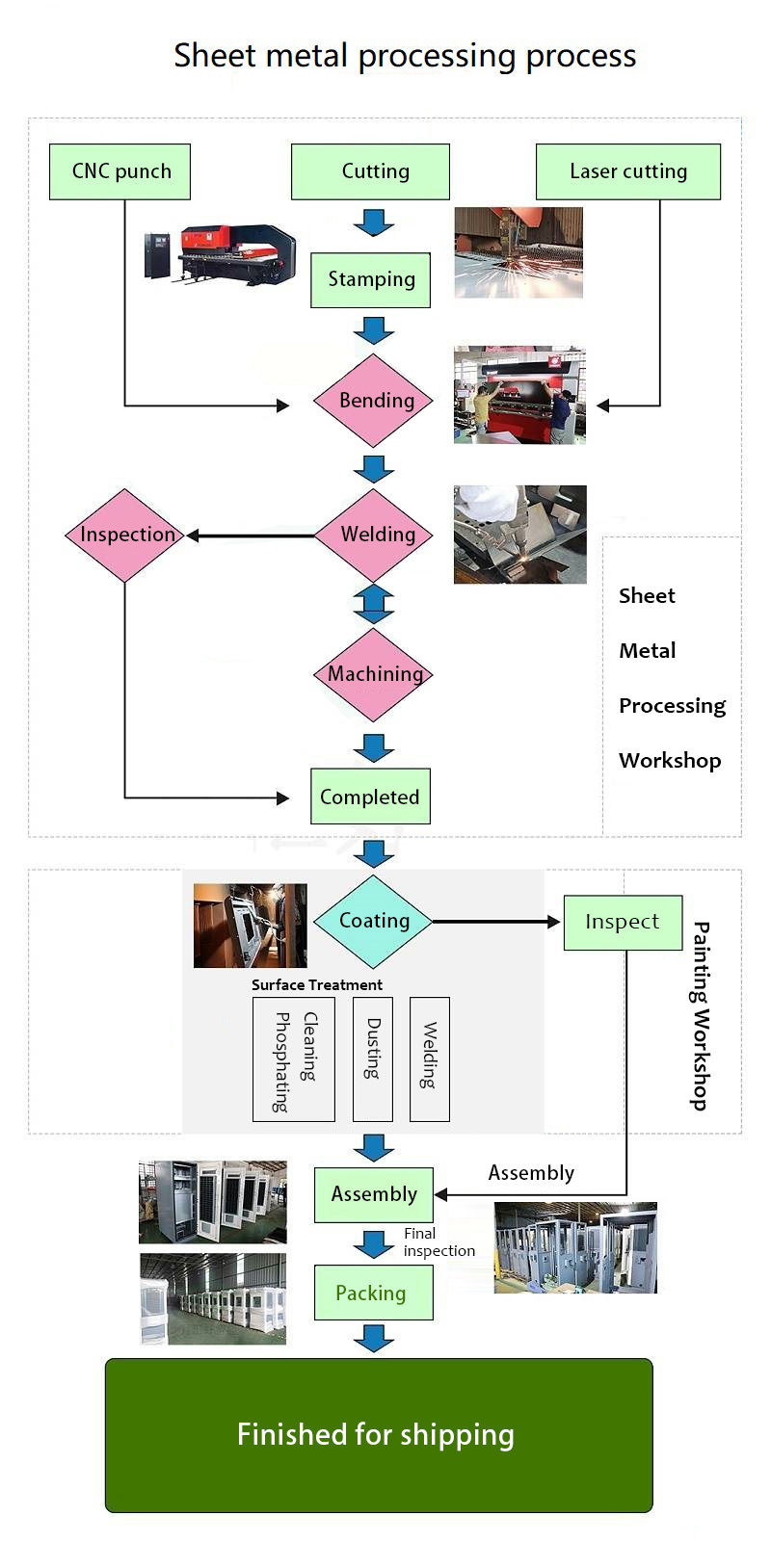EV Charging Station Sheet Metal Process
According to the differences in the sheet metal structure of charging station, the process design process varies, but the total does not exceed the following points.
1、 Charging station sheet metal processing feed.
1. Material Feeding: There are many feeding methods, mainly laser machines, which use laser machines to cut simple strip materials. They are mainly used for punching and forming preparation processing, with low cost and accuracy less than 0.2. However, they can only process strip materials or block materials without holes or cutting angles.
2. Punch, which uses a punch to expand sheet parts on one or more steps and unfold various shapes of blanking parts, has the advantages of short working time, high efficiency, high accuracy, and low cost. It is suitable for mass production, but can be used for mold design.
3. CNC cutting, when CNC cutting, the first step is to write a CNC machining program. Using programming software, it is necessary to write the unfolded drawings into programs that can be recognized by the CNC wire drawing mechanism, so that they can press various shapes of flat parts step by step according to these programs. But its structure is affected by the tool structure, so the cost is low and the accuracy is 0.15
4. Laser cutting is a method of using laser cutting to cut and design large flat plates through different shapes of the plate structure. Similar to NC cutting, laser programs need to be written. It can cut various complex and shaped flat parts with high cost and accuracy of 0.1
5. Sawing machines are mainly used for aluminum profiles, square tubes, wire drawing tubes, round rods, etc., with low cost and low accuracy.
2、 Processing of charging station sheet metal shell.
1. Charging pile sheet metal shell flanging, also known as hole flanging, is a process of pulling a slightly larger hole on a smaller base hole and then tapping it. It is mainly processed by thinner sheet metal to increase strength and thread turns. In order to avoid sliding teeth, it is usually used for thin plate thickness and normal shallow flanging around the hole, with the thickness basically unchanged. When the allowable thickness is reduced by 30-40%, a height of 40-60% higher than the normal flanging height can be obtained. When the thickness of the plate is 50%, the flanging height can be obtained. When the thickness of the plate is large, such as 2.0, 2.5 or greater, it can be directly tapped.
2. Punch, using mold forming processing technology, generally processes punching, corner, drop, material, convex hull (convex), tearing, drilling, and forming. The processing requires corresponding molds to complete operations, such as punching drop mold, punch mold, tear mold, hole mold, forming mold, etc. The operation mainly pays attention to positioning and directionality.
3. Pressure riveting, the main types of pressure riveting include pressure riveting nuts, screws, loose sleeves, etc., all of which are operated by hydraulic riveting machines or stamping machines. They are riveted on sheet metal parts using expansion riveting, and attention should be paid to directionality.
4. Bending, bending technology is the process of folding 2D flat parts into 3D parts. The processing enterprise needs to have a bending machine and corresponding bending material mold design completed, and it also has a certain lack of bending processing sequence. The principle is to fold first without affecting the interference of the next tool, and then fold later if there is problem interference.


